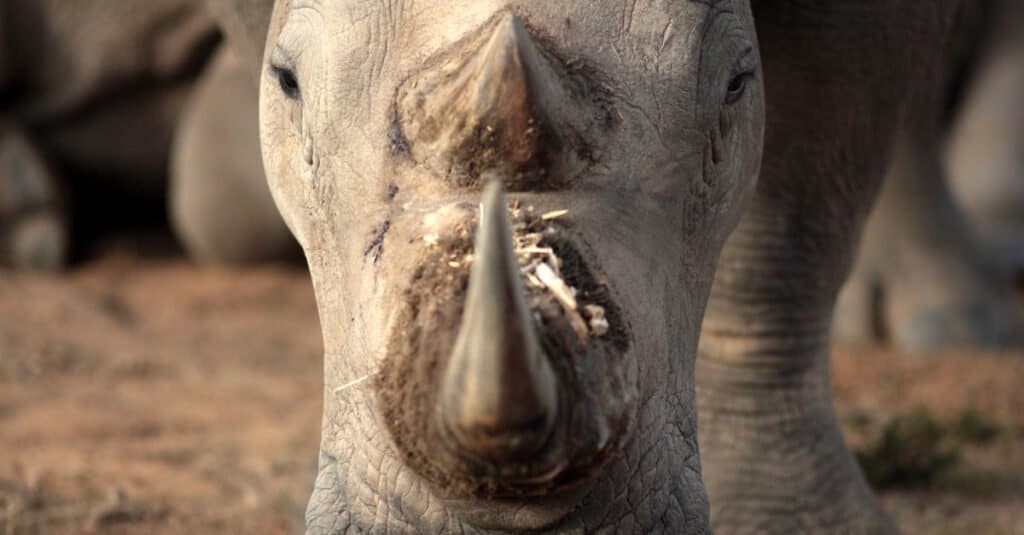Watch a Rhino Calf Charge and Buck Two Humans Trying to Treat Its Mother
This brave little rhino calf is determined to protect its mom. She is being treated by some rangers for a dislocated toe but her baby is not pleased about it! The calf perceives the humans as a threat and wants to do its best to drive them away. The baby repeatedly charges at the rangers who have to fend it off with one hand whilst treating the mom with the other!
Watch the Action Now
How Many Calves Do Rhinos Have?
Female white rhinos are pregnant for 16 months and usually have their first calf when they are around six or seven years old. They only have one calf and then wait around three years before they have another.
Black rhinos are pregnant for between 15 and 17 months and are between three and six years old when they first have a calf. They also have just one calf and do not have another for four years.
What Affects Rhino Survival?
Rhinos are obviously vulnerable to drought but can survive better than many other species. However, new mothers and their calves need most food and water to keep them healthy. If there is not enough available water, pregnant female rhinos may abort their fetuses. Sadly, malnutrition also kills rhinos and this is related to habitat loss. Adult black and white rhinos do not have any natural predators. However, lions and hyenas will target young rhinos and rhinos that are old or sick. Sadly, poaching is the primary cause of rhino death. These animals are highly vulnerable to hunting because they often revisit the same resting spot every day.
What Are Rhino Horns?

©JONATHAN PLEDGER/Shutterstock.com
Black and white rhinos have two horns that are positioned on the rostrum (front of the head) one in front of the other. In white rhinos, the leading edge at the base tends to be straight whereas in the black rhino, the leading edge is more rounded.
Rhino horns are made of keratin which is the same protein that is found in human hair and fingernails. However, it does not contain hollow fibers. Instead, it grows in layers from specialized skin cells. At the center of the horn, there are layers of calcium and melanin which provide even more strength. Rhino horns are solid just like a turtle’s beak.
The horns continually grow by just under an inch every year. The exact shape and color are influenced by the rhino’s diet, the temperature of the environment, and external damage.









